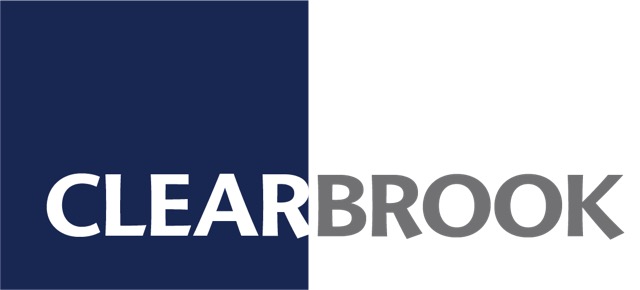Domestic Equity
- Equity markets performed poorly amid heightened trade tensions across the globe, as President Trump escalated tariffs on Chinese goods following a deal stalemate and announced a 5% tariff on Mexican goods, which caught the market by surprise.
- As market participants had priced in significant progress in trade negotiations between China and the U.S.,
the S&P 500 fell 6.4% when talks broke down. Nonetheless, the S&P 500 remains up 10.7% YTD. Growth and Value fell during the month equally at -6.4%, yet Growth continues to outpace Value on an YTD basis by nearly 5%. Small Caps lagged Large Caps by 1%. - The worst performing sector last month was Energy and Basic Materials, down -11.1% as global growth concerns resurfaced. Financials outperformed, and banks and REITS led the way, as interest rates dropped and investors sought out higher yields.
- Looking forward, the U.S. economy continues to be in an expansionary mode, while the rest of the world appears to be contracting, as measured by global PMI. Additionally, as global central banks are willing to provide liquidity to the market, we believe the U.S. economy will continue to be strong and that there will be some eventual resolution to the tariff disputes with China and Mexico.
International Equity
- International equity markets also fell in May, but not nearly as much as the U.S., as China implemented retaliatory tariffs after the U.S. increased their latest round of tariffs on Chinese goods. EAFE was down -4.8%, but remains up 7.64% for the YTD. However, factoring in the downturn in the fourth quarter of 2018, the 1-year return is -5.75%.
- European economic indicators are pointing to a contracting economy, which is compounded by political risks as PM Theresa May steps down due to lack of progress with Brexit, Italy faces budgetary challenges, and as France continues to deal with the yellow jacket movement.
- Emerging markets have been dragged lower with the break down in U.S./China trade negotiations. Nonethe- less, economic reforms and policy stimulus are expected to support EM stocks over the long term. Improved consumption and economic activity from Chinese stimulus could help offset trade-related weakness. For the month, EM was down -7.3% but remains in positive territory at 4.1% YTD.
Fixed Income
- Corporate bonds posted negative returns across the quality spectrum in May.
- Treasury yields fell sharply across the curve, with the 10-year yield dropping 37bps to 2.13%, the lowest level in over 18 months.
- At month end, the yield on 3-month Treasury Bills was 2.34%, 22bps higher than the 10-year Treasury yield.
- With widening credit spreads, investment-grade corporate supply came in at approximately $102 billion, below expectations of $120-130 billion. YTD, there has been approximately $500 billion issued by invest- ment-grade firms, 8% behind last year’s pace.
- Investment-grade corporate spreads widened by 17bps to close the month at 128bps; the 5-year average is 127bps. High-yield corporate spreads widened by 75bps, from 358bps to 433bps.
- Securitized sectors performed relatively well despite the soft tone, as asset-backed securities (ABS) managed to outperform Treasuries, supported by strong demand for short duration, high-quality assets. Economics
Economics
- The outlook for 2H 2019 has us focused on tensions related to politics, policy, and the health of the corporations and consumers. The increase in political uncertainty in Europe and global trade tensions and have had a deleterious effect on business sentiment and global capex. While these are negative factors, we also have a positive backdrop of solid corporate sector fundamentals, increasing availability of credit as central banks are back in stimulus mode, and incredible strength in jobs at such a point late in the economic cycle that has pushed DM unemployment rates to 40-year lows. The combination of macroeconomic policy supports coming from the Fed’s potential rate cut, China’s fiscal easing and the ECB’s re-inflation stance, global growth should accelerate during the second half of 2019.
- In the U.S., despite the U.S./China trade dispute, Consumer Sentiment jumped last month to a much stronger-than-expected 102.4 preliminary May result. This is a 15-year high and is only the fourth plus-100 reading of the expansion, all over the last several years. The expectations component jumped 8.6 points to 96.0 which is also a 15-year high while, in sharp contrast, current conditions edged only 0.1 higher to a still moderate 112.4.
- In Europe, Industrial Production was weak in March after a smaller revised 0.1% monthly decline in February, output declined a further by 0.3% at quarter-end. This was the fifth decrease in the last six months and returned annual growth to negative territory, falling from 0.0% to -0.6%. The monthly drop was attributable to non-durable consumer goods and energy where output contracted 1.0% and 0.3% respectively.
- In Asia, China’s retail sales grew 7.2% year over year in April, slowing from 8.7% in March and falling well short of the consensus forecast of 8.6% growth. This is the weakest year-on-year growth since May 2003. Retail sales rose 0.47% on the month after increasing 0.91% previously. Officials said weak retail sales was partly attributable to two fewer holidays that month compared with the same month last year.

